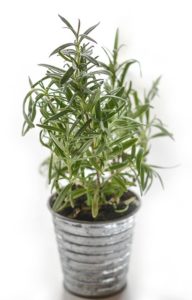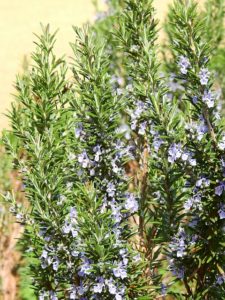How to Grow the Rosemary Plant from Cuttings
Rosemary, which is scientifically named Rosmarinus officinalis, is an evergreen with needle-like leaves and aromatic fragrance. It originates from the Mediterranean but is now grown all over the world. People use it mostly for cooking, landscaping, and aromatherapy. It’s easy to see why. A fully-grown rosemary plant offers a feast to the senses. What with its strong scent, powerful flavor, lovely flowers, and refreshing leaves. You’d be missing a lot if you didn’t have a rosemary plant nearby. Growing one is so simple. Read on and we’ll show you how.
Basic types of rosemary plant
There are basically two types of rosemary – upright and trailing – and an unbelievable number of varieties. The upright cultivars are mostly used for cooking and essential oil extraction. The reason for that is simple – their bigger leaves contain more oil. On the other hand, the crawling varieties cascade so beautifully. That makes them very popular for landscapers and garden enthusiasts.
All varieties can be used for cooking. It’s no secret, though, that Tuscan Blue and Spice Islands are favored by chefs. That’s much the same way how gardeners delight in the graceful crawlers. First there’s:
Prostratus: It’s called prostrate rosemary for obvious reasons.
Roman Beauty: It is a semi-trailing spreader with blue-violet blooms. Even some upright types are winners when it comes to garden appeal.
Majorca Pink: has pink-lavender flowers.
Aureus: has gold-flecked leaves.
Benenden Blue: has featherlike leaves and sky blue flowers.
In temperate climates they bloom in spring and summer. People in warmer regions are luckier. They get to enjoy rosemary flowers year-round.
Growing rosemary from cuttings
The rate of success in germinating rosemary seeds is discouragingly low so we don’t recommend it for you. We suggest that you grow your rosemary from cuttings instead. You’ll see that it will be so much easier.
Pick the correct variety of rosemary for the purpose you have in mind. If you intend to grow rosemary plant as a culinary herb, pick the upright varieties. The mother plant must be bushy and healthy. This improves the chance of survival of the new plant and reduces risks of carry-over pests or plant diseases.
Step-by-step guide for propagating rosemary
We have prepared a guide for you, and we promise that it’s going to be short and sweet.
1. Prepare a small pot filled with 1/3 peat moss and 2/3 coarse sand. Set aside.
2. Cut several 6-inch stems from the mother rosemary plant.
3. Remove the leaves from the bottom half of each clipped stem.
4. Get your prepared pot of soil. Make a small hole to fit the stem cutting in. The part of the cutting without leaves goes deep into the soil.
(Note: Leaves left attached on the buried stem part will cause the stem to rot.)
5. Press the surrounding soil firmly with your fingers so that the stem stands upright.
6. Water the plant in the pot. Keep it in a warm spot but not directly under the sun.
7. Water regularly until roots start to grow. (Rooting takes place 4-6 weeks after planting.)
8. Once the cutting has already taken root in the soil, it’s ready for replanting in a bigger pot or on the ground.
Caring for the new plant
The advantage of planting rosemary in pots is that you can bring them indoor when the weather gets too harsh. On the other hand, planting them in your garden allows them to grow much larger than they’ll ever do in pots. Whatever works for you is fine as long as your rosemary plant is given proper care. Here’s a quick rundown of the basics:
- At its growing stage, the young rosemary needs at least 6 hours of direct sunlight daily. If it’s in a pot, place it on the windowsill or the porch which sees a lot of sunshine.
- Rosemary thrives best in warm climates. When temperatures dip to 0 degrees Fahrenheit or less, keep plant indoors. Use fluorescent lamp in lieu of sunlight. Place light 6 inches above the plant for 14 hours daily
- Rosemary prefers drier soil. Water only when the top 1-2 inches of soil feel dry to your touch. Waterlogging causes root decay. If you notice leaves turning brown and falling off, that means you’ve been over-watering the poor shrub.
- Indoor rosemary has to be aired outside at least once a week. Mildew sometimes gets to the plant if air is inadequate. Rosemary though has some pest-resisting properties, so you need not spray pesticides. In fact we don’t advise spraying especially for rosemary that’s intended for cooking.
- Pruning the plants encourages new growth and neatens its appearance. Always remember to cut a stem above the joint when pruning.
- You don’t need to apply fertilizer to a rosemary plant except when it’s terribly stunted or unhealthy. Attempt to correct the soil first. Add some agricultural lime to reduce acidity. If you really need to use fertilizer, find an organic non-acidic liquid formulation.
The rosemary plant is a hardy perennial. It will grow and thrive and be prolific wherever you plant it. Just don’t forget to give it the proper care it needs.
